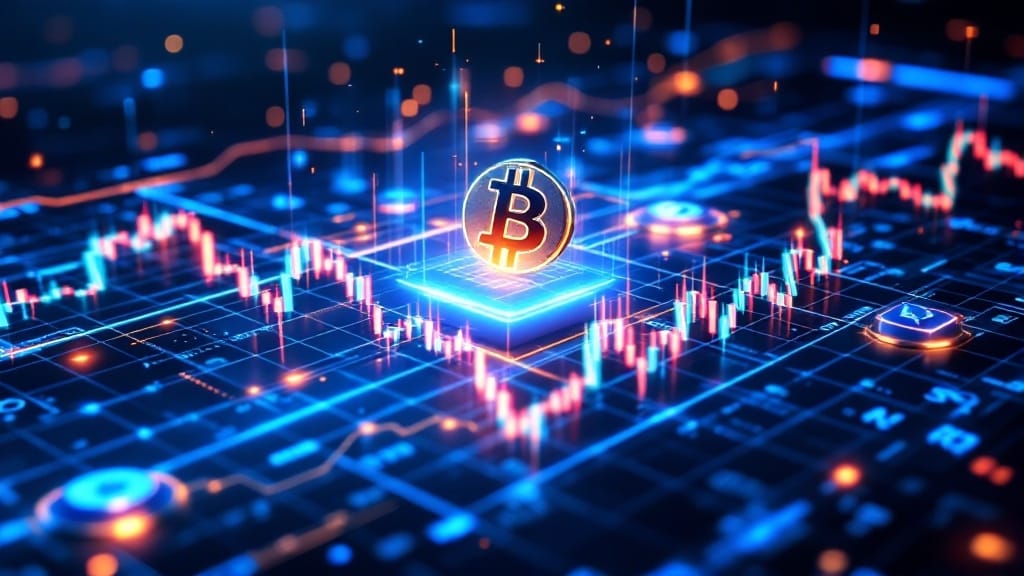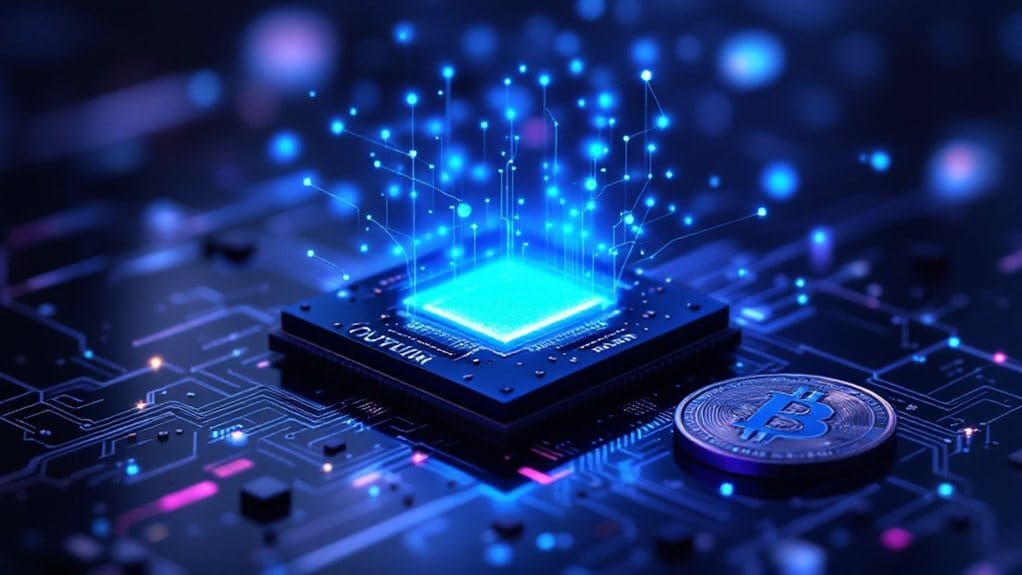Artificial intelligence is transforming cryptocurrency trading through advanced algorithms that analyze market data and execute trades with unprecedented precision. AI systems operate continuously, processing vast amounts of information while eliminating emotional biases that typically affect human traders. These sophisticated platforms implement multiple strategies, from trend following to arbitrage, while managing risk through automated protocols. Modern trading platforms harness machine learning capabilities to adapt to market conditions, identify patterns, and capitalize on opportunities across decentralized finance ecosystems. The integration of AI into crypto trading represents just the beginning of a technological upheaval in digital asset management.

As cryptocurrency markets continue to evolve at a rapid pace, artificial intelligence has emerged as a transformative force in digital asset trading, fundamentally reshaping how traders analyze markets and execute transactions. AI systems excel at processing vast quantities of market data, identifying patterns, and executing trades with unprecedented speed and precision, while simultaneously managing the inherent volatility of cryptocurrency markets through sophisticated algorithms and data analysis techniques.
AI revolutionizes crypto trading by processing massive data sets and executing precise transactions while managing market volatility through advanced analytics.
The implementation of AI in crypto trading manifests through diverse strategic approaches, including trend following, mean reversion, and arbitrage opportunities across exchanges. These systems operate continuously, monitoring market conditions 24/7 and executing trades based on predetermined parameters without the influence of emotional biases that often affect human traders. The advanced capabilities enable millions of daily transactions in volatile market conditions. Modern trading platforms like Bybit and Binance provide free trading bots to help traders automate their strategies effectively.
The technology particularly shines in complex strategies like grid trading, where AI can simultaneously manage multiple price levels and execute trades within specified ranges, optimizing potential profits from market fluctuations. Advanced platforms like Coinbase offer backtesting capabilities to validate trading strategies before deployment.
AI’s impact extends beyond basic trading functions into the domain of decentralized finance (DeFi), where intelligent systems enhance yield farming strategies and manage risk across multiple protocols. These applications continuously analyze market conditions, shift assets between different platforms, and adjust strategies in real-time to optimize returns while minimizing exposure to potential risks.
The technology’s ability to process vast amounts of data enables it to identify market inefficiencies and exploit price discrepancies across different platforms with remarkable efficiency.
Despite its advantages, AI-powered crypto trading faces notable challenges, including the requirement for high-quality data inputs and substantial technical infrastructure. The initial investment needed to develop or deploy AI trading systems can be significant, and technical failures or unexpected market events can impact system performance.
Nevertheless, the technology continues to advance, with improvements in machine learning algorithms and data processing capabilities leading to more sophisticated trading strategies. As the cryptocurrency market matures, AI’s role in trading is expected to become increasingly central, offering traders powerful tools for market analysis and automated execution while maintaining strict risk management protocols.
FAQs
How Much Initial Capital Is Needed to Start Ai-Powered Crypto Trading?
For effective AI-powered crypto trading, experts recommend a minimum initial investment of $5,000 to $10,000, which covers crucial startup costs.
This capital requirement includes monthly infrastructure expenses of $50-$200 for cloud hosting and API access, plus development costs ranging from $2,000-$5,000 for custom bot creation or $15-$100 monthly for managed solutions, ensuring adequate resources for sustainable trading operations.
What Programming Languages Are Essential for Developing AI Trading Algorithms?
Python stands as the primary language for AI trading development, offering vital libraries like TensorFlow and scikit-learn for machine learning implementation.
C++ proves key for high-frequency trading systems where speed is paramount, while Java provides robust platform compatibility for distributed systems.
R specializes in statistical analysis and visualization, and Go offers efficient concurrent processing capabilities for handling multiple trading operations simultaneously.
Can AI Trading Bots Work Effectively Across Multiple Cryptocurrency Exchanges Simultaneously?
AI trading bots can effectively operate across multiple cryptocurrency exchanges through sophisticated APIs and data synchronization protocols.
These systems monitor price differentials, execute cross-exchange arbitrage, and manage unified portfolios while maintaining consistent performance across platforms.
Through advanced algorithms and real-time data processing, bots can coordinate trading activities, balance risk exposure, and capitalize on market inefficiencies across diverse exchange environments simultaneously.
How Often Should AI Trading Strategies Be Retrained With New Market Data?
AI trading strategies should be retrained when significant market shifts occur, typically every 3-6 months or more frequently during volatile periods.
Retraining triggers include major economic events, regulatory changes, or when model performance metrics decline below predetermined thresholds.
Regular validation through backtesting and walk-forward analysis guarantees peak performance, while real-time monitoring systems can automatically flag when retraining becomes necessary based on market conditions.
What Backup Systems Protect AI Trading Operations During Network or Power Outages?
Multiple layers of backup systems protect trading operations during outages.
Data centers employ UPS systems and backup generators for continuous power supply, while geographic redundancy across server locations guarantees operational continuity.
Cloud-based failover systems automatically redirect operations to backup servers, and redundant internet connections prevent connectivity issues.
Furthermore, extensive disaster recovery plans include backup locations and trained staff for immediate emergency response.









